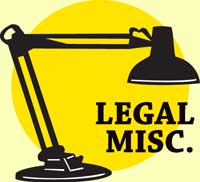Legal Issues Pertaining to Sweeping

Legal Issues Pertaining to Sweeping |
 |
DOT Drug and Alcohol TestingStart planning for compliance.by Matthew A. VegaThe Department of Transportation's (DOT) final alcohol and drug testing rules are now in effect, and cover over 7 million workers who perform 'safety sensitive' functions in the transportation industry. Mandated by the 1991 Omnibus Transportation Employee Testing Act, the new regulations impose alcohol testing for the first time and expand existing drug testing programs. Large employers (those with more than 50 employees) must implement all the requirements of the rule by January 1, 1995. Small employers (those with up to 49 employees) have until January 1, 1996 to comply. Separate versions of the new rules have been promulgated by each of the five federal administrations of the DOT which are responsible for regulating airlines, motor carriers, railroads, mass transit, and pipeline transportation industries. The rules are lengthy and contain generally the same requirements for who, what, where, and when the testing and training must be done by employers in each particular transportation industry. The most immediate change will be that by mid-September all covered employers are required to switch to using, if they have not done so already, the split sample procedure for collecting body fluid specimens for drug tests. The new rules will expand existing drug testing programs to cover not only interstate commercial drivers but also intrastate truck and motor coach operations including those operated by federal, state and local government agencies, church and civic organizations, Indian tribes, farmers, custom harvesters, for-hire, and private companies. Workers for such covered employers will be tested in the following situations:
In addition, the DOT has issued its notice of a proposed rule which would make for additional random drug testing regulations. If any of our readers who have a stake in this matter would like to submit a comment, they should let Sirote & Permutt's Labor Department know as soon as possible. Matthew Vega is a member of Sirote and Permutt, P.C., a full service law firm located in Birmingham, Alabama. To reach them call 205-933-7111. This article is reprinted from American Sweeper magazine, v3n3. |
© 2005 - 2022
|
Legal Issues Contents
|